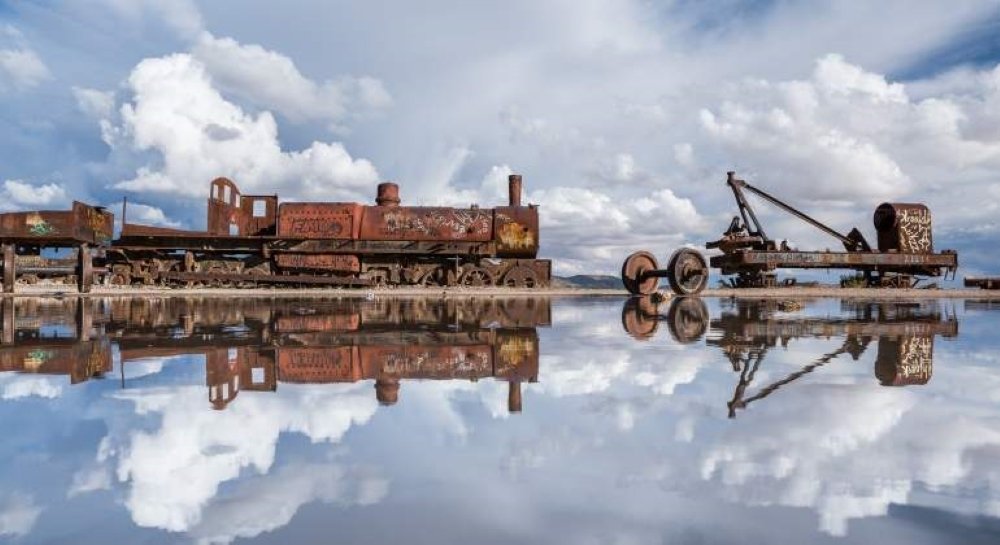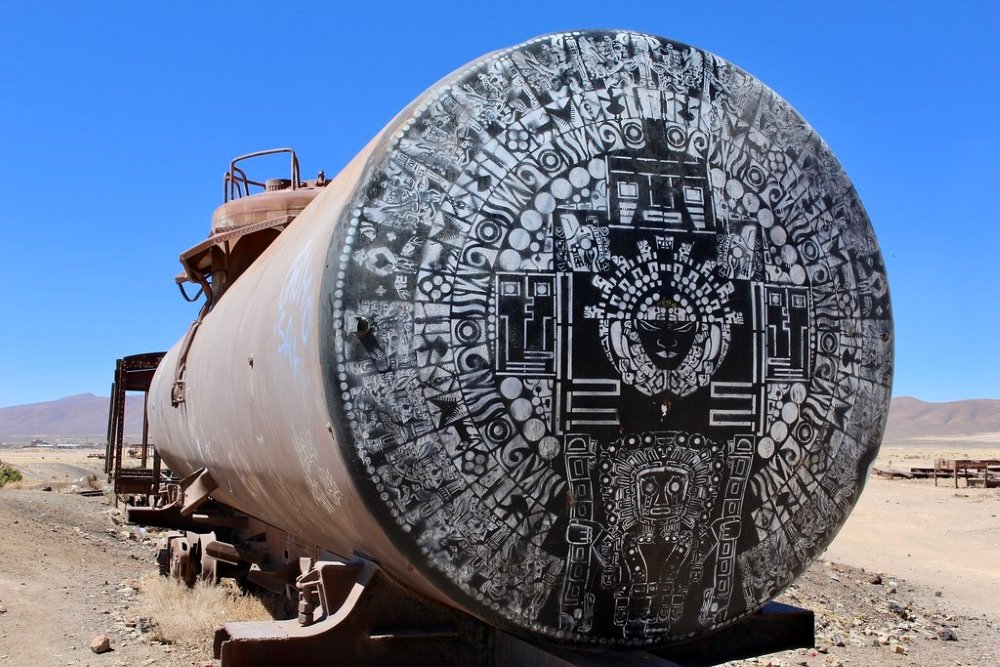Salt Flats | Uyuni Salt Flat | Bolivia
The Train Cemetery is located in the town of Uyuni, in southwestern Bolivia, at an altitude of approximately 3,670 meters above sea level. This area, known for its altitude and vast salt flat, is one of the highest and most remote regions in the world, which adds an additional element of interest for visitors exploring this historic and surreal site.
History of Salt Flats | Uyuni Salt Flat | Bolivia
The Train Cemetery in Uyuni, Bolivia, has a fascinating history dating back to the rise of the railroad industry in Bolivia in the late 19th and early 20th centuries.
In the second half of the 19th century, Bolivia was experiencing rapid economic growth due to the exploitation of minerals such as silver and tin. To facilitate the transportation of these natural resources from the interior of the country to the ports on the Pacific coast, extensive railroad networks were built.
The Antofagasta to Bolivia Railway (FCAB) was one of the most important railroad companies operating in the region. However, as the 20th century progressed and railway technology evolved, some of the older locomotives and cars became obsolete and were withdrawn from service.
The Train Cemetery in Uyuni then became the place where these disused locomotives and cars were abandoned. The arid climate and altitude helped preserve these relics of the railroad era, and over time, the site was transformed into an open-air museum of sorts.
Today, the Train Cemetery attracts tourists from all over the world who come to explore this unique site and capture the history and surreal atmosphere emanating from the rusting locomotives and wagons that lie among Uyuni’s desert landscape.

What to see in the Train Cemetery?
In the Uyuni Train Cemetery, there are several interesting things to see and explore:
- Abandoned Locomotives and Wagons: The main attraction of the Train Cemetery are the abandoned locomotives and wagons dating from the 19th and early 20th centuries. These railroad relics are scattered throughout the desert landscape and offer a fascinating glimpse into the history of the railroad industry in Bolivia.
- Photography: The Train Cemetery is a photographer’s paradise. The rusting locomotives and rail cars provide a unique and surreal backdrop for capturing breathtaking images.
- Exploration: Visitors can walk among the abandoned locomotives and railcars, exploring the various machines and closely examining their structure and details. It is a unique experience to get so close to these historic relics.
- Railroad History: The Train Cemetery offers an opportunity to learn about Bolivia’s railroad history and how the railroad industry played a crucial role in the country’s economic development in the past.
- Sunset and Sunrise: Many visitors recommend visiting the Train Cemetery during sunset or sunrise, when the sunlight creates a special atmosphere and enhances the beauty of the desert landscape and the abandoned locomotives.
In short, the Train Cemetery is a unique place that offers a combination of history, art and natural scenery, making it a must-see for those visiting the Uyuni region of Bolivia.

How to get to the Train Cemetery?
To get to the Train Cemetery in Uyuni, Bolivia, you can follow these steps:
- Getting to Uyuni: Most travelers arrive in Uyuni from La Paz, Bolivia, by bus or plane. The most common option is to take a bus from La Paz to Uyuni, a trip that usually takes about 10 to 12 hours. Flights are also available from La Paz to Uyuni airport, although they are less frequent.
- Organize a Tour: Once in Uyuni, the most convenient way to visit the Train Cemetery is through an organized tour. In Uyuni, you will find numerous tour agencies that offer excursions to the Salar de Uyuni and its surrounding attractions, including the Train Cemetery. You can book a tour with one of these agencies.
- Tour to the Train Cemetery: Most tours to the Salar de Uyuni include a visit to the Train Cemetery as part of their itinerary. Once you have booked your tour, the tour operator will pick you up at your accommodation in Uyuni or at a designated meeting point.
- Visit to the Train Cemetery: During the tour, the guide will take you to the Train Cemetery, where you will have time to explore and take pictures. The guides often provide information about the history of the site and the abandoned locomotives.
- Return to Uyuni: After visiting the Train Cemetery, the tour will continue to other attractions in the area, such as the Salar de Uyuni and Incahuasi Island. Once the tour is completed, you will be driven back to Uyuni.
It is important to make sure to book a tour with a reliable tour agency with good reviews to ensure a safe and satisfactory experience. Also, remember to bring adequate clothing for the cold and windy weather of the region, as well as water and sunscreen.

Recommendations for visiting the Train Cemetery
Here are some recommendations for visiting the Train Cemetery in Uyuni:
- Appropriate clothing
The weather in Uyuni can be extremely cold and windy, especially in the morning and afternoon. It is recommended to bring warm, wind-resistant clothing, such as jackets, hats, gloves and scarves.
- Sunscreen and sunglasses
The altitude and sun exposure can be intense, even on cloudy days. It is important to bring broad-spectrum sunscreen and sunglasses to protect your skin and eyes.
- Water and snacks
Be sure to bring plenty of water and some snacks to keep you hydrated and energized during your visit, especially if you plan to spend several hours exploring the Train Cemetery and its surroundings.
- Comfortable footwear
The terrain in the Train Cemetery can be uneven, with rocks and debris, so it is recommended to wear comfortable and resistant footwear, such as boots or hiking shoes.
-
Camera
The Train Cemetery is a unique and picturesque place, perfect for capturing stunning photos. Don’t forget to bring a camera or your cell phone with enough battery and storage space.
- Respect for the environment
Although the Train Cemetery is an abandoned place, it is important to show respect for the environment and the historical relics found there. Avoid damaging or vandalizing the locomotives and wagons, and respect the tour guide’s directions.
- Guided tour
Consider joining a guided tour for a more informative and safe experience. Guides often provide interesting information about the history and significance of the Train Cemetery, as well as tour tips.
- Visiting Hours
Although the Train Cemetery does not have specific opening hours, it is recommended to visit during the day to make the most of the natural light and enjoy a safer experience.
By following these recommendations, you will be well prepared to enjoy a memorable visit to the Train Cemetery in Uyuni, Bolivia.












